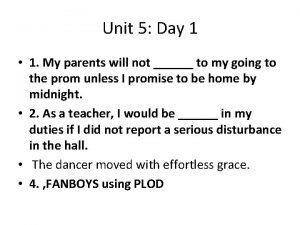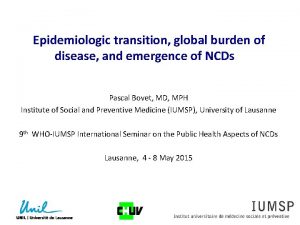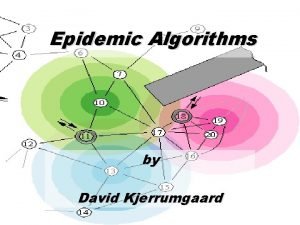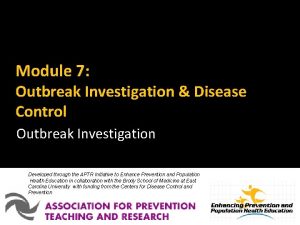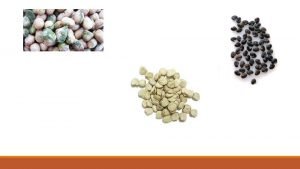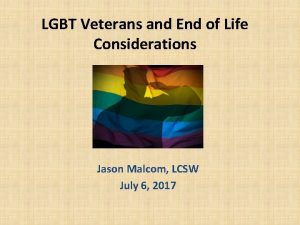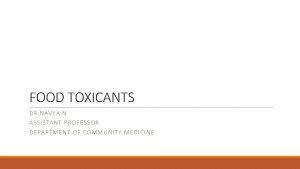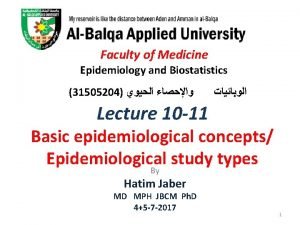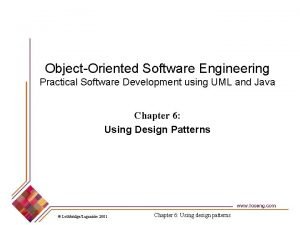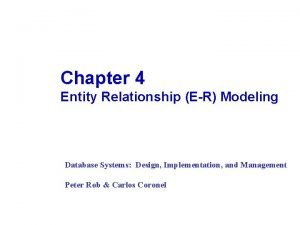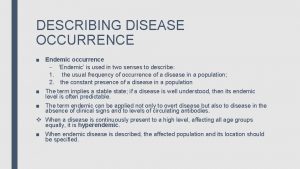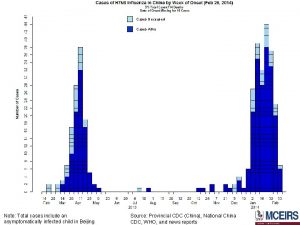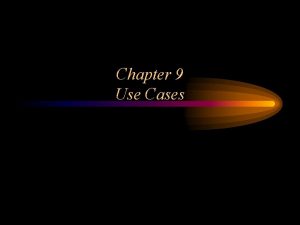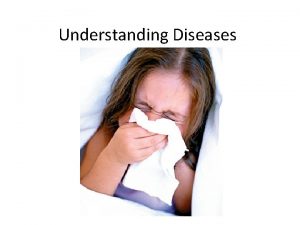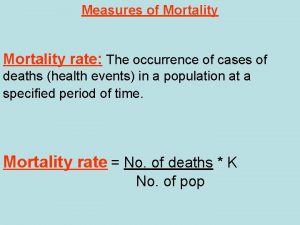Epidemic Epidemic The occurrence of more cases of












- Slides: 12

Epidemic • Epidemic: The occurrence of more cases of a disease than would be expected in a community or region during a given time period. A sudden severe outbreak of a disease such as SARS.

Endemic • It is a disease or pathogen that is found in or confined to a particular location, region, or people at relatively high prevalence and incidence rates in comparison with other areas or populations. • It is a disease that is constantly present to a greater or lesser degree in people of a certain class or in people living in a particular location • Malaria, for example, is endemic to tropical regions.

Endemic Holoendemic Essentially every the individual are infected Mesoendemic Teleendemic

Epizootic • It is the affection of a large number of animals at the same time within a particular region or geographic area. Used of a disease. • The term epidemic is sometimes reserved for disease among human beings; an outbreak of disease among animals other than man is termed epizootic.

Enzootic • Endemic in animals. An enzootic disease is constantly present in an animal population, but usually only affects a small number of animals at any one time of a specific geographic area.

Disinfection • It is aim at destroying the organism when it is in the environment. • E. g the use of chlorine in wells and sterilization of surgical instruments

Fumigation • Fumigation is a method of pest control that completely fills an area with gaseous pesticides —or fumigants—to suffocate or poison the pests within. It is utilized for control of pests in buildings (structural fumigation), soil, grain, and produce, and is also used during processing of goods to be imported or exported to prevent transfer of exotic organisms. This method also affects the structure itself, affecting pests that inhabit the physical structure, such as woodborers and drywood termites

Quarantine • It is the limitation of movement of persons who have been exposed to infection. The restriction continues for a period of time equal to the longest duration of the incubation period usual for the disease.

Isolation • It means that the person with the disease is not allowed to come into close contact with other people, except those who are looking after him.

Requirements for isolating a patient • 1. 2. 3. 4. 5. A disease with: High morbidity and mortality. High infectivity. No significant extra-human reservoir Infectious cases easily recognizable Chronic carriers are not a significant part of the reservoir

Chemoprophylaxis • It is the use of drugs in order to protect persons who are exposed to the risk of infection.

Zoonoses • They are animals infection which may sometimes spread to humans. • Eg. Plague and rabies
 More more more i want more more more more we praise you
More more more i want more more more more we praise you More more more i want more more more more we praise you
More more more i want more more more more we praise you Criminal cases vs civil cases
Criminal cases vs civil cases Doctors attributed the epidemic to the rampant
Doctors attributed the epidemic to the rampant Epidemiologic transition
Epidemiologic transition David kjerrumgaard
David kjerrumgaard Endemic epidemic
Endemic epidemic Epidemic dropsy
Epidemic dropsy Aids epidemic
Aids epidemic Gondhli millet
Gondhli millet Endemic epidemic
Endemic epidemic Abstraction-occurrence design pattern
Abstraction-occurrence design pattern Cardinality and connectivity
Cardinality and connectivity



